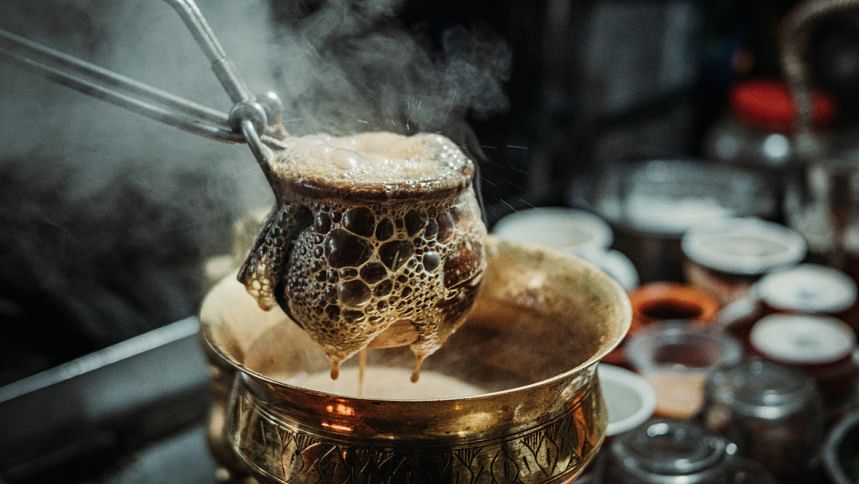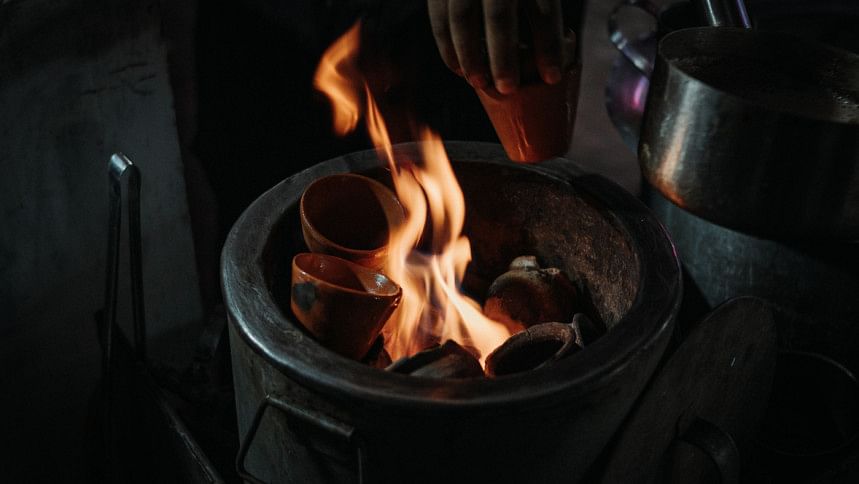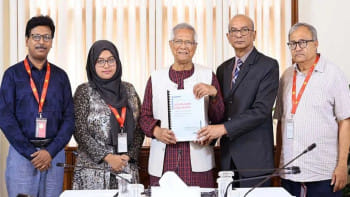On the love for matka cha

Cha is a beverage that brings people closer, effortlessly complements our 'adda' sessions, and adds warmth to our chilly evenings. As winter has announced its arrival, matka cha is trending once again. Its smoky and sweet flavour is a pure delight to the taste buds that would give the cinnamon latte or luxurious espresso from any 5-star hotel a run for its money!
The love we have for cha is an inherited trait for most Bengalis and winter seems to increase our cravings for a perfect cup of tea. From time immemorial, clay pots have been used by our ancestors — hence, this creatively made matka cha has both artistic and cultural value.
The tea itself is prepared in a unique manner and to watch it get brewed is a sheer pleasure. The process starts with pre-heating the delicately designed, small, terracotta pots. These are heated in a big tandoor stove and simultaneously milk is boiled and tea liquor is brewed with cinnamon sticks, cardamoms, and bay leaves, among other ingredients. And oh my! Wait till you see the boiled milk: creamy and thick and is certainly enough to make your mouth water.
Then comes the best part—using a steel tong a hot terracotta pot is placed inside a big brass, commonly known as 'tandoor dani', and the milk is gently poured into the clay pot. Finally, sparkling tea liquor is added. Voila! Tea is ready to be served and sipped.
The matka cha derives its flavour from the earthen teapot and is equally celebrated among all for this uniqueness—the hot clay pot and the tea liquor creates an instant sizzling and this is how the brunt terracotta taste mixes finely with the cha.

As we went to get our warm earthen cup of tandoori matka cha on a wintry evening, we encountered an enormous crowd watching the display and waiting for their serving of matka cha. We had to squeeze into the crowd to get our cha and some customers informed us that winter has increased the popularity of this special kind of cha.
"In India's Surat and Punjab, people regularly drink matka cha and it is a very popular tradition there. We went and stayed there for a couple of years and learned the art of making matka cha. Eventually, we came back to Bangladesh and started our business," said Roni, who was making steaming cups of matka cha for us as we went to explore the makeshift tea stalls in Mohammadpur.
The varieties of tandoori matka cha you will find are utterly fascinating and prove that our tea baristas are born creatives! Mix the cinnamon sticks, cardamoms, and bay leaves, and then add a little milk powder, nuts, and date palm jaggery, you get a basic, traditional, tandoori matka cha. Again, mix a bit of chocolate powder, and you will have your Choco matka cha. And if you are feeling fancier, then add blended malai (fat cream) and makhan (butter) together, and you will get malai matka cha. If you are feeling even more extravagant, pour chocolate syrup and jams, butter, and biscuit together and enjoy Choco blast matka cha!
Luckily, the trend of drinking matka cha is also creating employment for the community of potters. Upon asking, Md Saddam, owner of a makeshift tea stall in Shyamoli informed, "I usually buy each matka (clay pot) at Tk 7-10 and purchase them from the kumars. As people have started to give recognition to these clay pots, the kumars have also increased their production and these earthen clay pots are not only beautiful to look at, they don't usually harm the environment like plastic cups."
Make-shift tea stalls offering matka cha have mushroomed in numerous alleys of Mohammadpur's Town Hall and Salimullah Road, and you can enjoy a cup of mouth-watering matka cha by spending Tk 30-60 depending on the ingredients that are used to make the tea. Additionally, tea stalls serving matka cha are scattered around Dhaka city namely in Dhanmondi, Jatrabari, and Uttara. However, if you are looking for a cosy environment and upscale tea stalls, do visit the stalls such as Cha Chai in Gulshan, and Matka Cha & Momo in Mirpur.

 For all latest news, follow The Daily Star's Google News channel.
For all latest news, follow The Daily Star's Google News channel. 








Comments